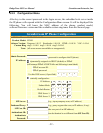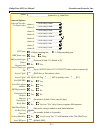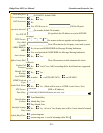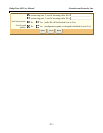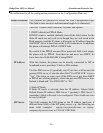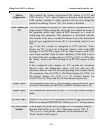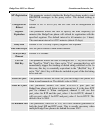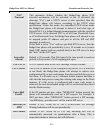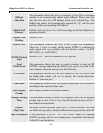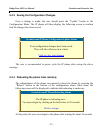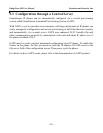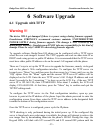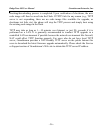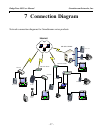
BudgeTone-100 User Manual Grandstream Networks, Inc.
- 30 -
NAT
Traversal
This parameter defines whether the BudgeTone phone NAT
traversal mechanism will be activated or not. If activated (by
choosing “Yes”) and a STUN server is also specified, then the
BudgeTone phone will behave according to the STUN client
specification. Under this mode, the embedded STUN client inside
the BudgeTone phone will attempt to detect if and what type of
firewall/NAT it is behind through communication with the specified
STUN server. If the detected NAT is a Full Cone, Restricted Cone,
or a Port-Restricted Cone, the BudgeTone phone will attempt to use
its mapped public IP address and port in all the SIP and SDP
messages it sends out.
If this field is set to “Yes” with no specified STUN server, then the
BudgeTone phone will periodically (every 10 seconds or so) send a
blank UDP packet (with no payload data) to the SIP server to keep
the “hole” on the NAT open.
keep-alive
interval
Default is 20 seconds. This field specify the time period to send out
packets to keep router’s NAT mapping port open
Use NAT IP
NAT IP address used in SIP/SDP message. Default is blank.
TFTP Server
This is the IP address of the configured tftp server. If it is non-zero
or not blank, the BudgeTone phone will attempt to retrieve new
configuration file or new code image from the specified tftp server at
boot time. It will make up to 3 attempts before timeout and then it
will start the boot process using the existing code image in the Flash
memory. If a tftp server is configured and a new code image is
retrieved, the new downloaded image will be verified and then saved
into the Flash memory.
Voice Mail
UserID
If the ID number put here, when “MESSAGE” button pressed, the
phone will automatically send out a SIP request. For example, if
8005 put here, when “MESSAGE” button pressed, a SIP message
“sip:8005@my_provider.com” will be sent to SIP server.
Subscribe for
MWI
Default is NO. When set to Yes a SUBSCRIBE for Message
Waiting Indication will be sent periodically.
Auto Answer
Default is NO. When set to Yes, any incoming call will be
automatically answered via speakerphone after a Beep. This is
somewhat similar to Intercom but still different.



